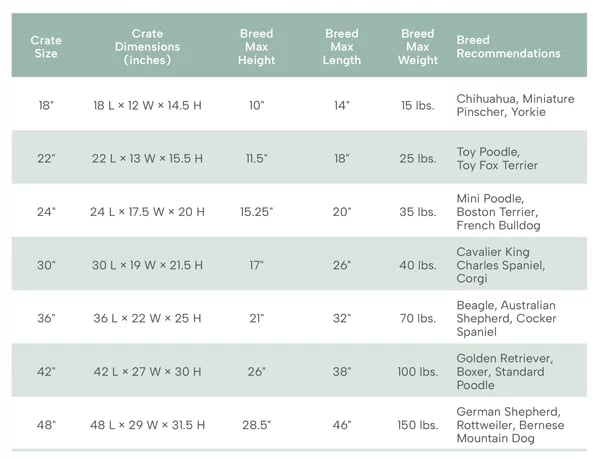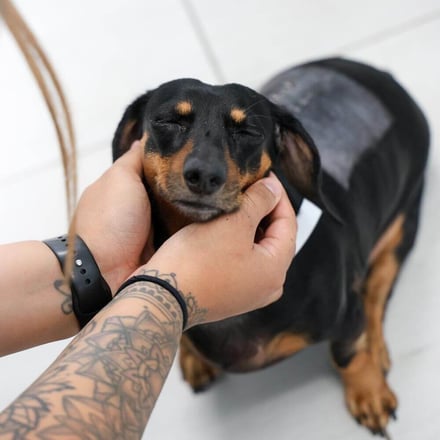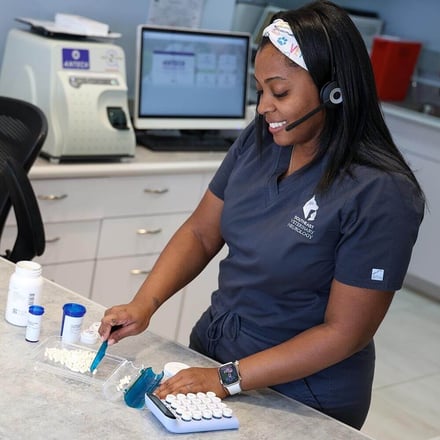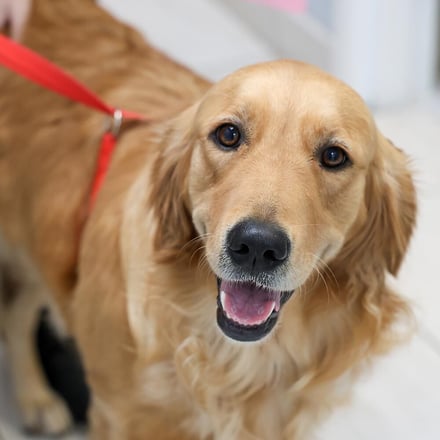Postoperative Pet Care
Home » Postoperative Care
After receiving round-the-clock nursing care at Southeast Veterinary Neurology (SEVN) following surgery, your pet is ready to go home. It is common to have some apprehension about bringing your pet home, and we know that you have questions. All of this will be reviewed in person, but this guide is meant to reinforce those instructions. Download the fact sheet.
Have questions about your pet's recovery?
Crate Rest
The most important part of your pet’s recovery for the first few weeks is exercise restriction. A crate is typically necessary to adequately confine your pet. Immobilization is not the goal, but restriction is. Your pet should remain crated at all times, only being carried in and out to urinate and defecate. Large dogs may be walked with a sling or short leash.
A metal crate with a top is recommended to allow your pet to see out and you to see in, while preventing your pet from tearing it, knocking it over, or climbing/jumping out.
The appropriate size is 2-3 times the size of your pet, so that your pet can stand up, turn around, and move away from an accident, but can’t run, jump, or stand on hind legs.

We recommend a foam mattress with a plastic cover for easy cleaning. You can use towels or blankets over this. Bedding should be soft, clean, and dry at all times. Since your pet cannot be bathed for a few weeks, use pet wipes to clean your pet when necessary.
Choose a location that best allows your pet to stay calm. Sometimes having multiple crates throughout the house is helpful.
Because your pet will be resting and not getting exercise, they probably will not eat as much as they normally do. Your pet will be eating/drinking in its crate. After ventral slot surgery, raised or attachable crate bowls work best. After atlantoaxial (AA) stabilization surgery, hand feeding is recommended.
Crates are boring. While we want your pet to rest, sometimes a favorite toy can help them relax. Use your judgment. If the toy causes too much excitement, remove it. Your veterinary neurologist may prescribe medication if your pet is too anxious during confinement.
Urination and Defecation
Some pets that have spinal surgery are unable to urinate voluntarily. This typically applies to pets that are completely paralyzed. Your neurologist or nurse will discuss with you whether bladder expression is necessary or not. If so, it is initially best to perform it four times per day until you are comfortable with it.
Finding urine in the cage or bedding does NOT necessarily mean that your pet is urinating voluntarily. It often means that the bladder is full and ‘overflowing.’ If you find urine in your pet’s cage, ALWAYS palpate the bladder to make sure it is not full.
Please call us if you are unable to express your pet’s bladder in a 24-hour period.
Many pets will not defecate for a few days after going home. This is normal and should not alarm you. Some pain medications and anesthetic drugs can slow the digestive system. Additionally, food is usually withheld for a few days before and after surgery.
If it has been longer than five days, please call, and we can prescribe a stool softener that is safe and gentle for your pet.

Incision

Your pet has a surgical incision. Most pets are unable to chew, lick, or scratch the incisions for most neurosurgical procedures. If your pet is one of the few who does chew or lick the incision, an Elizabethan collar (‘cone’ or ‘E-collar’) may be necessary. Monitor the incision for any redness, swelling, pain, or discharge. Do not apply any topical medications or bathe your pet until after the sutures are removed, typically in about two weeks. If you have any questions about the incision, please call us or your regular veterinarian, whichever is more convenient.

Medication

Most patients will go home on postoperative medications. Your pet received strong intravenous pain medications during and after surgery and has now been transitioned to oral medications. It is important to give only the medications prescribed by your neurologist, which can be used together and given at the same time. If your pet has been prescribed prednisone, it might drink, urinate, and pant more. This is normal and will be temporary. Heartworm and flea pills may be given if they are due. However, topical medications should be withheld until after suture removal, which is typically in about two weeks.

Recovery Time

Every patient is different. Some will recover quickly and others may take several months. Recovery time depends on several factors, including the severity of the problem prior to surgery, the duration of signs prior to surgery, the surgical procedure that was performed, the age of the pet, and any concurrent health problems.
Physical Rehabilitation
Your veterinary neurologist will work with you to decide when and where, physical rehabilitation is recommended. Although it is often recommended for pets after spinal surgery, rest is more important for the first few weeks. However, there are some basic exercises you can do at home. Your neurologist will let you know whether or not these are appropriate for your pet.